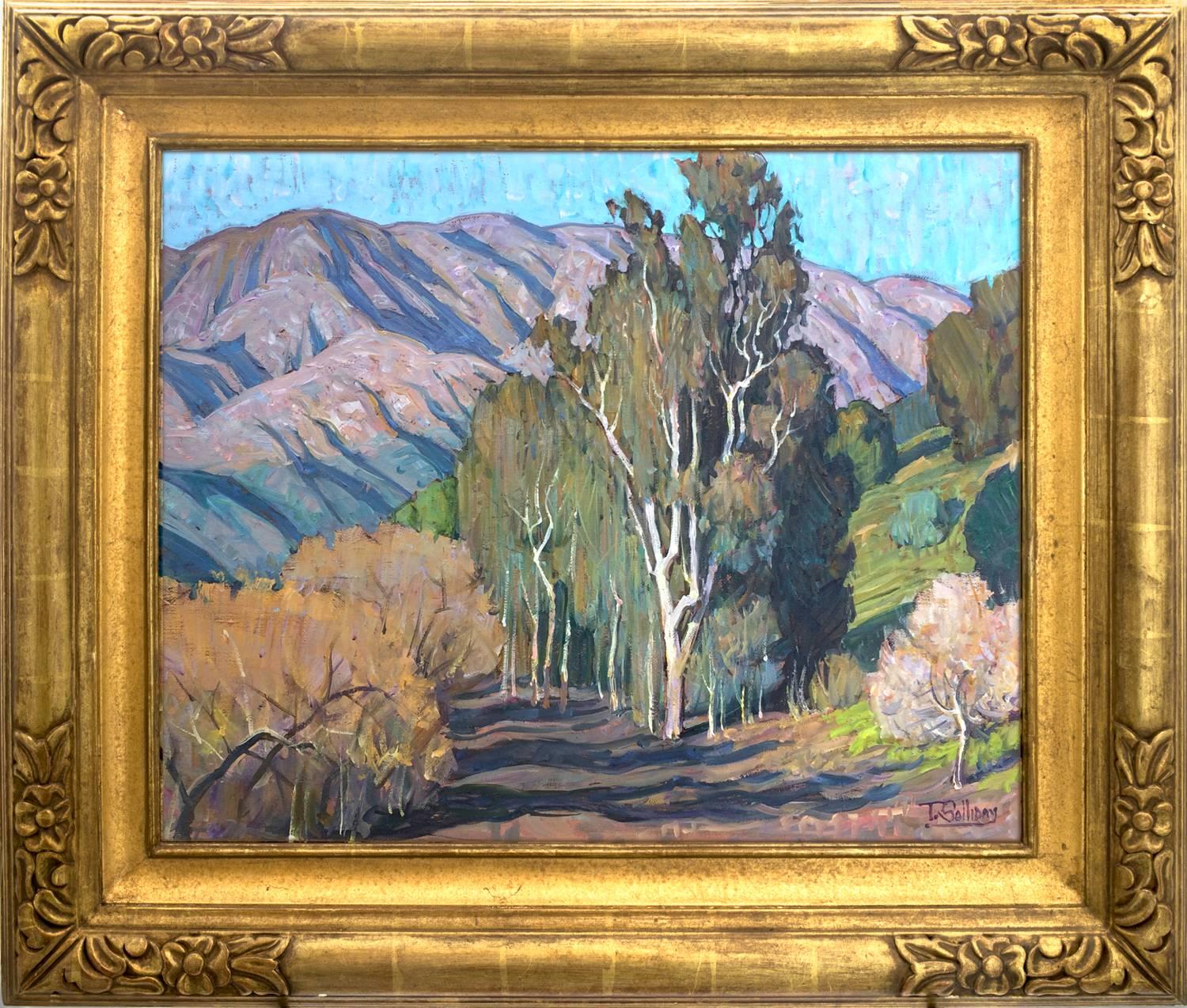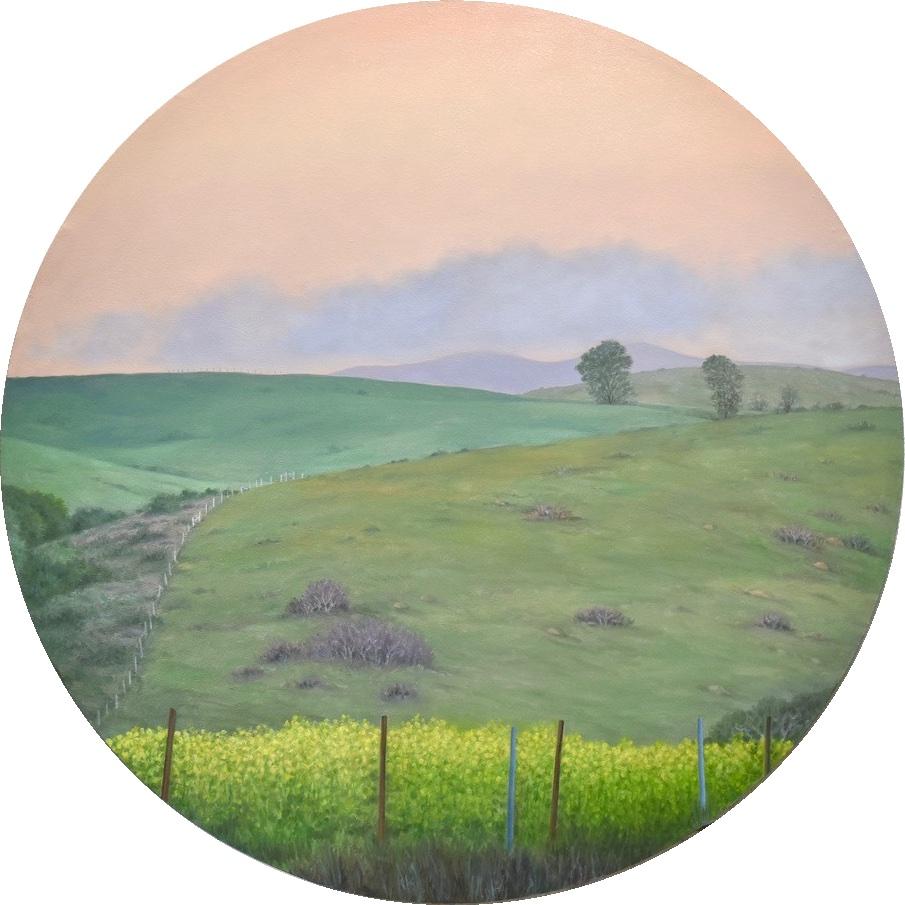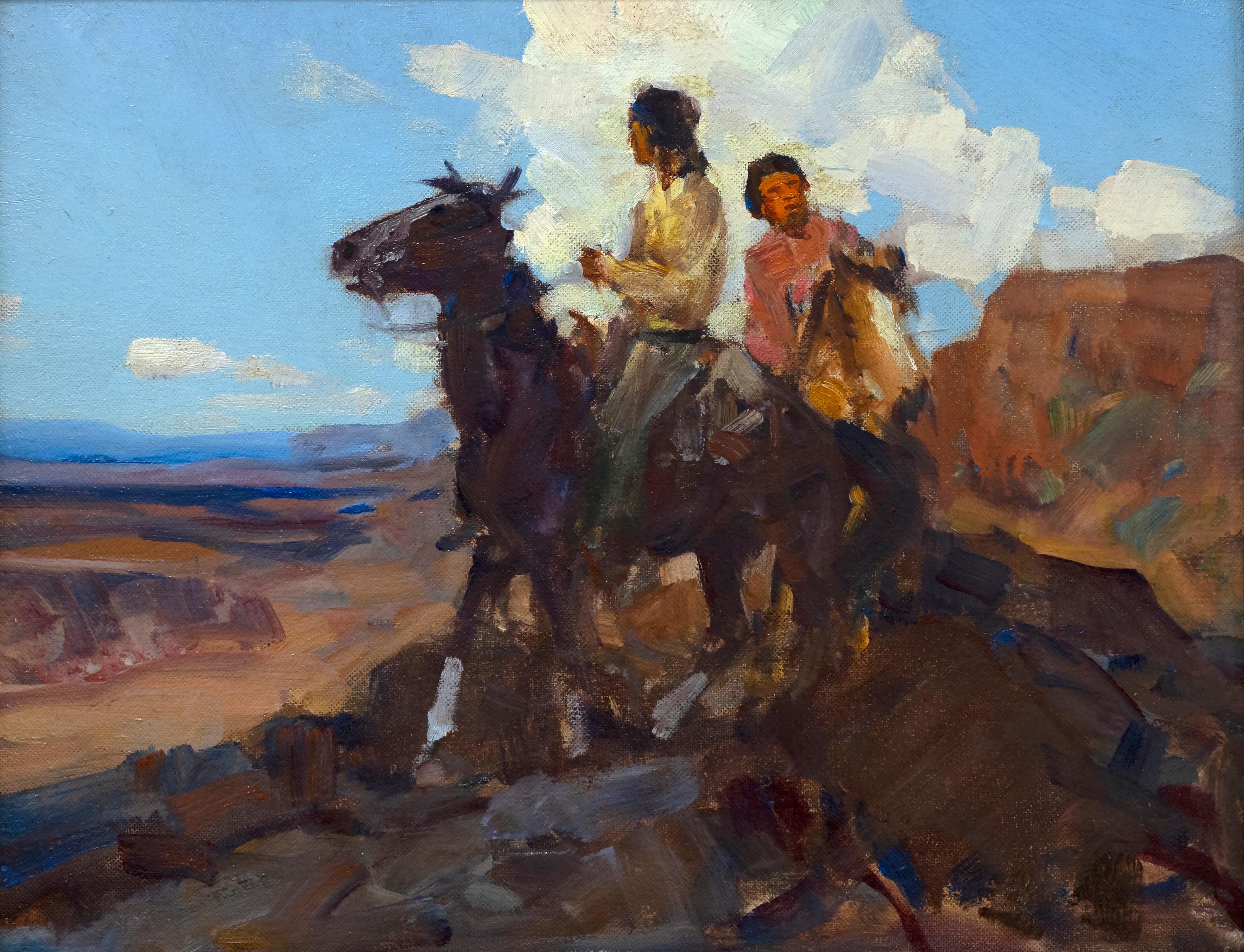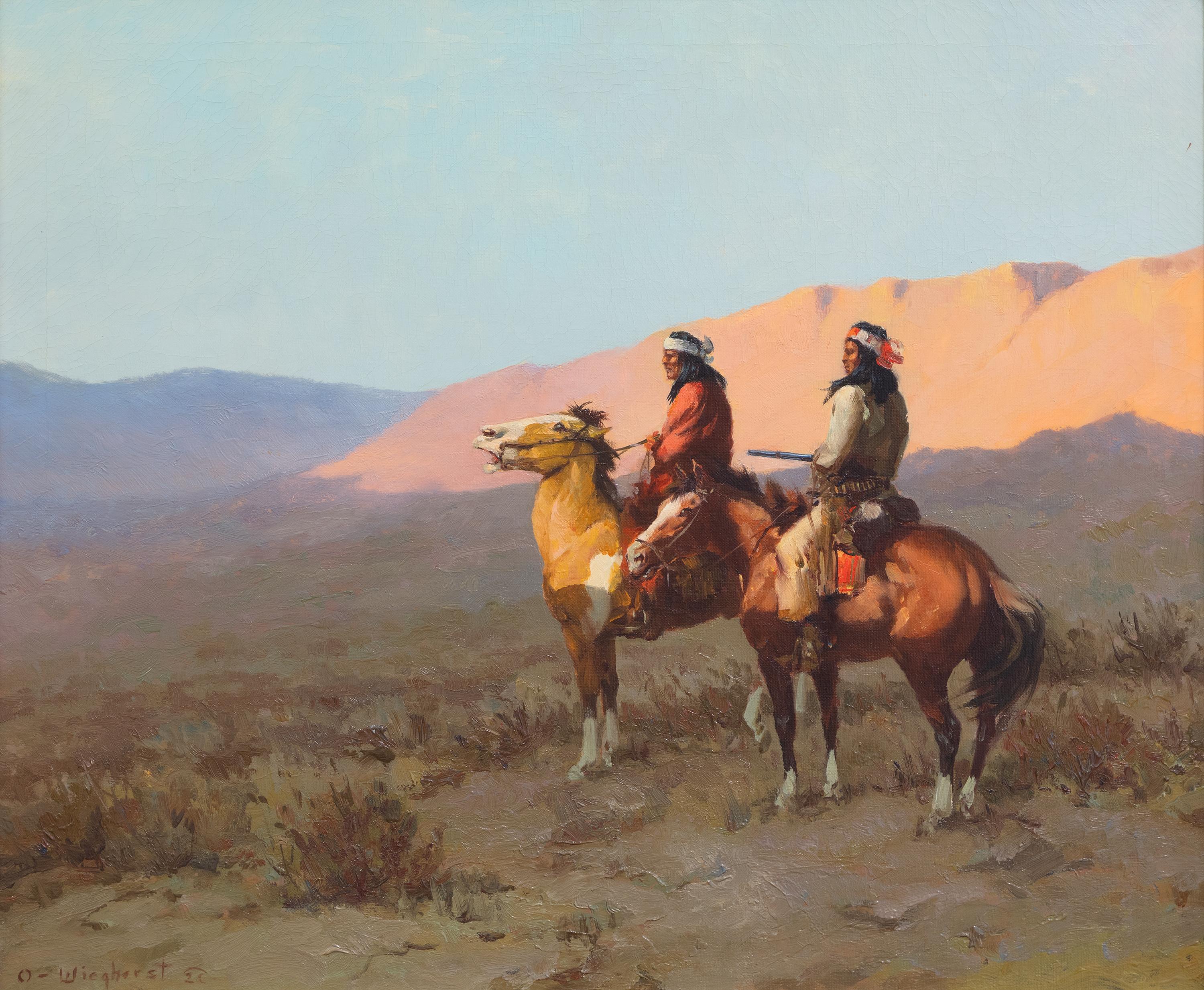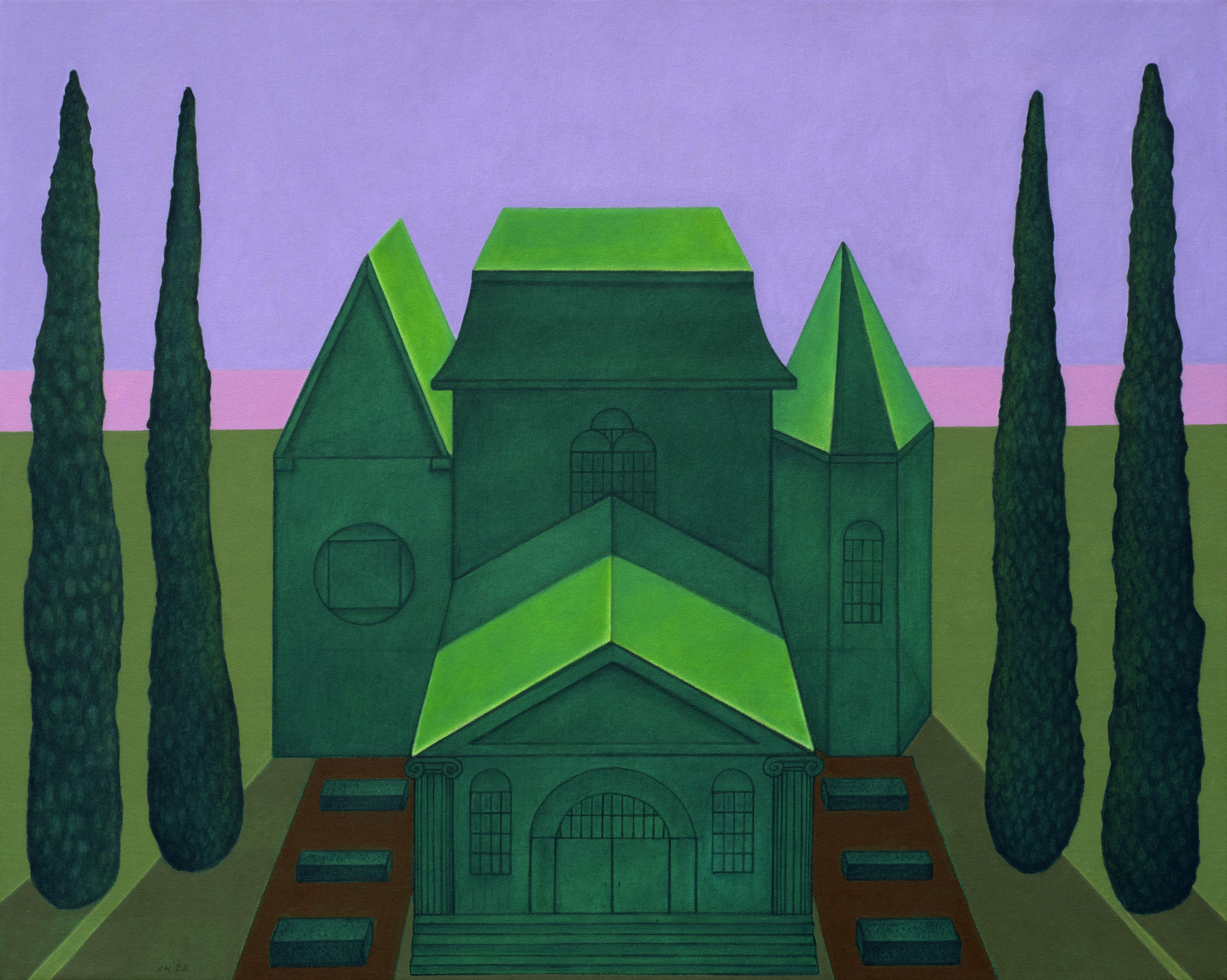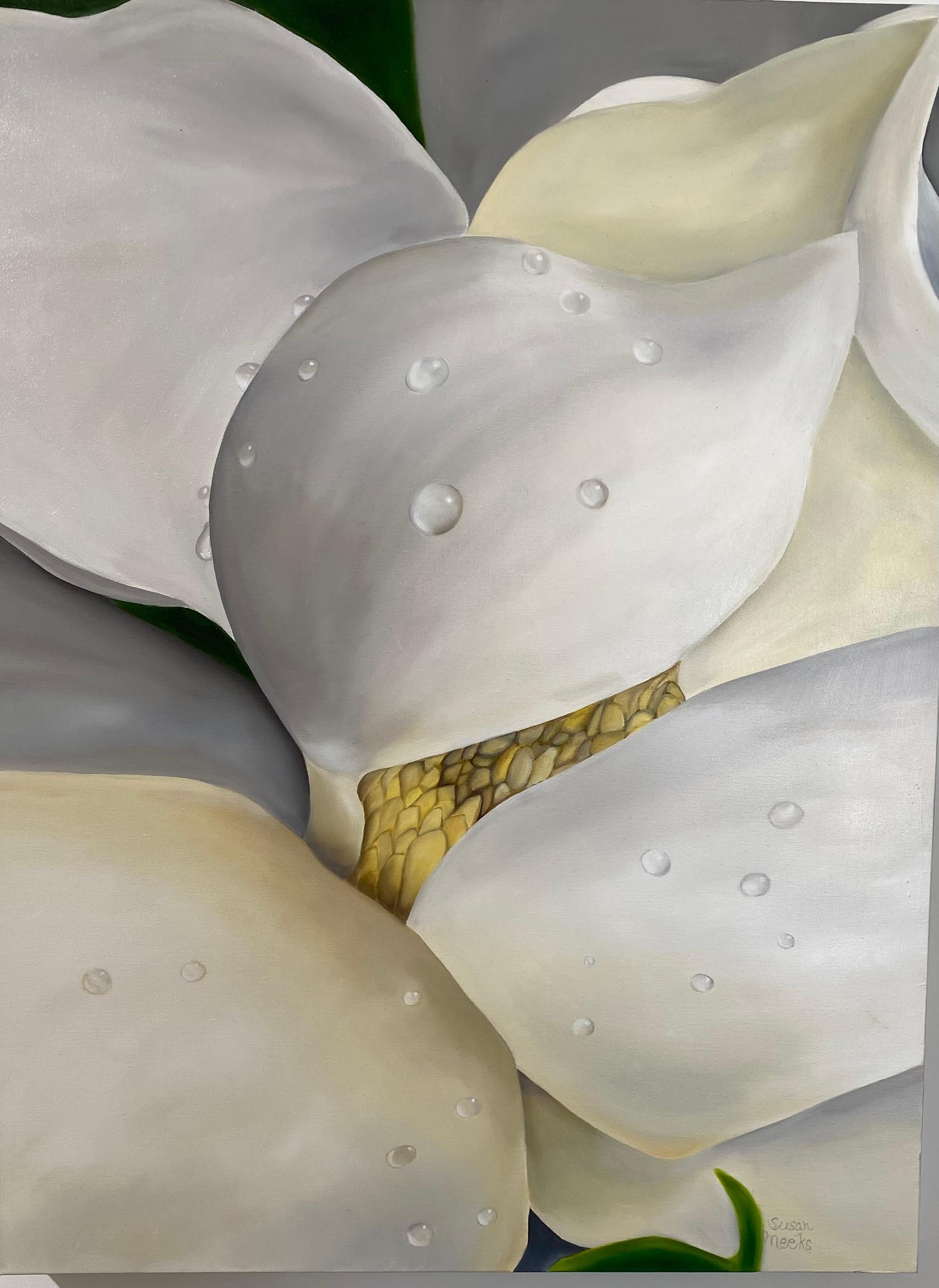Items Similar to "Low Tide at Noon, Wellfleet, Massachusetts, " Ernest Fiene, WPA, Boat on Beach
Want more images or videos?
Request additional images or videos from the seller
1 of 8
Ernest Fiene"Low Tide at Noon, Wellfleet, Massachusetts, " Ernest Fiene, WPA, Boat on Beach
About the Item
Ernest Fiene (1894 - 1965)
Low Tide at Noon, Wellfleet, Massachusetts
Oil on canvas
26 x 36 inches
Signed lower right
Ernest Fiene was born in Elberfeld, Germany in 1894. As a teenager, Fiene immigrated to the United States in 1912. He studied art at the National Academy of Design in New York City from 1914 to 1918, taking day classes with Thomas Maynard and evening classes with Leon Kroll. Fiene continued his studies at the Beaux-Arts Institute of Design in Paris from 1916 to 1918, adding classes in printmaking at the Art Students League in 1923.
Fiene began his career as an artist in 1919 with his first exhibition of watercolors at the MacDowell Club arranged by his mentor Robert Henri. In 1923 the Whitney Studio Club mounted a large exhibition of his works. The following year he had an exhibition at the New Gallery in New York, which completely sold out all fifty-two works, including paintings, watercolors, drawings, and etchings. With the proceeds of sales from the New Gallery exhibition, Ernest Fiene and his younger brother Paul, a sculptor, built studios in Woodstock, New York in 1925.
In the early Twenties Ernest Fiene painted mostly landscapes of Woodstock and both the Ramapo and Hudson River Valleys. He was the subject of the first monograph for the Younger Artists Series in 1922. Published in Woodstock, the series went on to include Alexander Brook, Peggy Bacon, and Yasuo Kuniyoshi. The book reproduced 1 illustration in color and another 27 reproductions in black and white. Around 1925 Fiene became fascinated with the intensity, excitement, and opportunities for color harmonies New York City offered as a subject. His paintings shifted to urban and industrial themes with architecture, industry, and transportation becoming his subjects.
By 1926 Fiene had attracted the dealer Frank K.M. Rehn, who gave him a one-man exhibition that year, which travelled to the Boston Arts Club. C.W. Kraushaar Galleries gave Fiene a one-man exhibition of urban, landscape, portrait, and still life paintings in 1927. Julianna Force, the director of the Whitney Studio Club and first director of the Whitney Museum of American Art, included two of Fiene's paintings in a fall exhibition in 1928. The Whitney Studio Club showed Fiene's paintings in a two-man exhibition with Glenn O. Coleman that year and acquired three of Fiene's paintings. Also in 1928 Fiene became affiliated with Edith Halpert's Downtown Gallery where he had an exhibition of 20 lithographs in the spring. Fiene sold his house in Woodstock in 1928 to spend more of his time in New York City.
With so many successful exhibitions, Fiene returned to Paris in 1928-29 where he rented Jules Pascin's studio and studied at the Académie de la Grande Chaumière. In France, Fiene painted both landscape and urban subjects developed from ideas influenced by Cubist geometry and the use of flat areas of broad color. Upon returning to New York in 1930, Fiene used this new approach to continue to paint New York skyscraper and waterfront subjects, as well as to begin a series of paintings on changing old New York based on the excavations for Radio City Music Hall and the construction of the Empire State Building. Frank K.M. Rehn Galleries exhibited this series, titled "Changing Old New York," in 1931. Fiene also has solo exhibitions at Rehn Galleries in 1930 and 1932. Fiene's oil paintings are exhibited at the Chicago Arts Club in 1930 as well.
Fiene was included in the Museum of Modern Art's exhibition Painting and Sculpture by Living Americans in December of 1931. Visiting New York, Henri Matisse saw the exhibition and called Fiene's Razing Buildings, West 49th Street the finest painting he had seen in New York. Fiene had two mural studies from his Mechanical Progress series exhibited at the Museum of Modern Art's exhibition Murals by American Painters and Photographers in 1932. Fiene sent View from my Window which depicts Fiene working on a lithograph stone while looking out his window to the newly completed Empire State Building to the Carnegie International in 1931. In 1932 Fiene participated in the first Biennial of American Painting at the Whitney Museum and his prints were included in exhibitions at the Downtown Gallery and the Wehye Gallery. In the same year, Fiene was awarded a Guggenheim fellowship to further study mural painting in Florence, Italy.
On his return from Italy in 1933 Fiene re-engaged himself in New York City life and won several public and private mural projects. Fiene resumed his active exhibition schedule, participating in two group exhibitions at the Whitney Museum and a one-man exhibition of recent paintings at the Downtown Gallery in January 1934. In 1933 he purchased a farm in Southbury, Connecticut, which added Connecticut scenes to his landscape subjects. This was also the year Fiene began to spend summers on Monhegan Island, Maine, where he painted seascapes, harbor scenes, and still lifes.
Fiene's landscape paintings attracted numerous commissions as part of the American Scene movement. From 1935-36 Fiene took an extended sketching trip through the urban, industrial, and farming areas of Pennsylvania and West Virginia. Most of the twenty-four Pennsylvania urban and rural paintings from this trip were featured in an exhibition held at the First National Bank in Pittsburgh in October of 1937 by the Pittsburgh Commission for Industrial Expansion. Fiene said of these works that he formed rhythm, opportunity for space and color, and integrity in the Pennsylvania mill and furnace paintings. Fiene received the silver medal for one of the Pittsburgh paintings titled Frosty Morning at the Art Institute of Chicago in 1937.
The Colorado Springs Fine Arts Center invited Fiene to spend the summer of 1935 teaching there. He accepted and fit in painting trips through Colorado and New Mexico, including Taos and Santa Fe. In 1935, the Arts Center had an exhibition of his oils and watercolors. In August of that year the Denver Art Musuem has an exhibition of thirty paintings and watercolors and purchased the painting Connecticut Hills, Winter. The Denver Art Museum held an exhibition of Fiene's lithographs in 1937.
In 1937 Fiene also completed a mural for the Post Office in Canton, Massachusetts. In 1938 he completed a large four panel mural for the Department of the Interior Building in Washington, DC. Fiene's largest mural project was for the High School of Needle Trades, begun in 1937 and unveiled in 1940 after two and a half years of constant work.
Fiene had his largest exhibitions in 1940 with a total of 53 paintings and watercolors at his new dealer Associated American Artists. The exhibition includes Razing the Old Post Office, a New York subject which received a prize at the Carnegie International in 1939; Frosty Morning which received silver medal at the Art Institute of Chicago in 1937, and Spring Evening which received the W.A. Clark prize from the Corcoran Gallery in 1939.
Ernest Fiene participated in the American Tobacco Company's series of tobacco paintings, commissioned from 1940 to 1942 by the company's president George Washington Hill. American Tobacco sought the best artists of the time, including Ernest Fiene, Aaron Bohrod, Thomas Hart Benton, Doris Lee, George Schreiber and Frederick Taubes, to depict the entire tobacco production, from planting and harvesting to curing and auction. The paintings, which continued to arrive at American Tobacco until 1945, were used to decorate the company's headquarters and in advertisements. American Tobacco described the commission as "a series of paintings of the tobacco country by America's foremost artists."
During the war years, much of Fiene's commission work consisted of painting various phases of industry in relation to the war, such as the trips he took to Texas and Louisiana to record the operations of the oil industry. He also recorded the making of optical instruments at Abbott Laboratories in Corning, New York. These war industry paintings were exhibited in 1944 at the Associated American Artists gallery in New York City.
As a successful artist Fiene was in demand as a teacher. Fiene taught at Westchester County Center in New York from 1930 to 1931 and at the Cooper Union in New York from 1938 to 1939. At the Art Students League he taught a well-known Saturday class from 1939 until his death in 1965. Fiene also taught at the National Academy of Design from 1959 to 1964; he was elected an Academician there in 1952.
Fiene's dealer during the 1950s and 1960s was Midtown Galleries in New York. In 1959 Midtown gave Fiene a solo exhibition of his most recent, more abstracted New York City subjects, which received glowing reviews. Fiene enjoyed widespread respect among the community of artists in America. Elected president of the Artists Equity Association in 1953, Fiene remained that organization's president in an honorary capacity until his death in 1965. He maintained a long time personal correspondence with the artists George Grosz, Jules Pascin, Gaston Lachaise, Stuart Davis, and Thomas Hart Benton.
Ernest Fiene's work is included in numerous public collections, including the Brooklyn Museum, Art Institute of Chicago, Cleveland Museum of Art, Denver Art Museum, Los Angeles County Museum of Art, Museum of Fine Arts, Boston, Pennsylvania Academy of the Fine Arts, and the Whitney Museum of American Art.
- Creator:Ernest Fiene (1894-1965, American)
- Dimensions:Height: 30 in (76.2 cm)Width: 40 in (101.6 cm)
- Medium:
- Movement & Style:
- Period:
- Condition:
- Gallery Location:New York, NY
- Reference Number:1stDibs: LU1841210652842
About the Seller
5.0
Platinum Seller
These expertly vetted sellers are 1stDibs' most experienced sellers and are rated highest by our customers.
Established in 2021
1stDibs seller since 2022
63 sales on 1stDibs
Typical response time: <1 hour
- ShippingRetrieving quote...Ships From: Larchmont, NY
- Return PolicyA return for this item may be initiated within 3 days of delivery.
More From This SellerView All
- "Tully Lumber Mill, Orange, Massachusetts, " Dorothy Eaton, WPA Factory RuralLocated in New York, NYDorothy Eaton Tully Lumber Mill, Orange, Massachusetts, 1935 Signed and dated lower right Oil on canvas 17 1/2 x 23 1/2 inches Dorothy Eaton was born in East Orange, New Jersey in 1893. She studied at Smith College...Category
1930s American Realist Landscape Paintings
MaterialsCanvas, Oil
- "Motion, " Victor Arnautoff, San Francisco Lighthouse, World's Fair WPA PaintingBy Victor Michail ArnautoffLocated in New York, NYVictor Mikhail Arnautoff (1896 - 1979) Motion (Mile Rocks Lighthouse), San Francisco, 1939 Oil and tempera on board 60 x 40 inches Signed lower left Provenance: The artist California School of Fine Arts (CFSA) John & Lynne Bolen Fine Arts, Huntington Beach, California Exhibited: New York, World's Fair, Exhibition of Contemporary American Art, 1939. San Francisco Museum of Art, 1962. Literature: American Art from the New York World's Fair 1939, Poughkeepsie, 1987, no. 11, p. 41, illustrated. Robert W. Cherny, Victor Arnautoff and the Politics of Art, Urbana, Illinois, 2017. The lighthouse in the distance is the Mile Rocks Lighthouse in San Francisco Bay, built in 1906 after many shipwrecks made the lighthouse necessary. In 1962 the lighthouse was reduced in size to make room for a helipad. Arnautoff was the son of a Russian Orthodox priest. He showed a talent for art from an early age and hoped to study art after graduating from the gymnasium in Mariupol. With the outbreak of World War I, he enrolled in the Yelizavetgrad Cavalry School. He went on to hold military leadership positions in the army of Nicholas II and the White Siberian army. With the defeat of the Whites in Siberia, he crossed into northeastern China and surrendered his weapons. Arnautoff remained in China for five years. He again tried to pursue art, but was impoverished and took a position training the cavalry of the warlord Zhang Zuolin. He met and married Lydia Blonsky and they had two sons, Michael and Vasily. In November 1925 Arnautoff went to San Francisco on a student visa to study at the California School of Fine Arts. There he studied sculpture with Edgar Walter and painting with several instructors. His wife and children joined him, and they all continued to Mexico in 1929, where, on Ralph Stackpole...Category
1930s American Realist Landscape Paintings
MaterialsTempera, Oil, Canvas
- "Shanties in the Bronx, New York" Bumpei Usui, Japanase-American City LandscapeLocated in New York, NYBumpei Usui Shanties in the Bronx, 1933 Signed lower right Oil on canvas 14 x 20 inches Provenance: The artist's estate Salander O'Reilly Galleries, New Y...Category
1930s American Realist Landscape Paintings
MaterialsCanvas, Oil
- "Backyard, Staten Island, New York" Bumpei Usui, Japanase-American LandscapeLocated in New York, NYBumpei Usui Backyard, Staten Island, 1933 Signed lower right Oil on canvas 20 x 24 inches Provenance: The artist's estate Salander O'Reilly Galleries, New...Category
1930s American Realist Landscape Paintings
MaterialsCanvas, Oil
- "Playground, Carl Schurz Park" George Picken, New York City, East River, UES WPABy George PickenLocated in New York, NYGeorge Picken Playground, Carl Schurz Park, 1938 Signed and dated lower left Oil on canvas 28 x 36 inches Provenance: Estate of the artist A native New Yorker, George Picken was born in 1898. His father, an artist and photographer, emigrated from Scotland; his mother came from Wales. They joined other European immigrants settling in New York City’s Hell’s Kitchen. Picken enlisted in the army during World War I and saw action at Verdun. After the war, he stayed in France and like many Americans returning from the vibrant Paris art scene, was inspired by the radical movement known as Impressionism. Upon his return Picken decided to follow in his father’s footsteps and become an artist. George began his studies in 1919 at the Art Students League during Robert Henri, Max Weber, and John Sloan’s tenure. There he took classes in studio art, illustration, and etching through 1923 studying extensively with George Bridgman. The writings of French philosopher Henri Bergson were widely circulated among the artistic community and looking at Picken’s early paintings one cannot help but wonder if as a young artist he was influenced by Bergson’s ideas. Bergson said, "[There are] two profoundly different ways of knowing a thing. The first implies that we move round the object; the second that we enter into it. The first depends on the point of view at which we are placed and on the symbols by which we express ourselves. The second neither depends on a point of view nor relies on any symbol. The first kind of knowledge may be said to stop at the relative; the second, in those cases where it is possible, to attain the absolute.” Picken’s recognition came early with showings of his work while he was a student. His drawings were published in the New Masses, a significant left-wing publication. The New York Public Library honored him with one-man shows in 1924 and 1928 and his work was included in group exhibitions at the Louis Comfort Tiffany Foundation, the Whitney Studio Club, Montross Gallery, and the Art Students League. During this time Picken married Viola Carton, one of Reginald Marsh’s models, and they lived in Westchester. Later they moved to Yorkville in Manhattan between 82nd street and East End Avenue where they began their family. Picken’s grandson Niles Jaeger recalled that, “Grandpa’s home and studio were in a five-story walk-up apartment, heated only by a coal stove. But there were wonderful views of the East River and the Queensborough Bridge...Category
1930s American Realist Landscape Paintings
MaterialsCanvas, Oil
- "Colonial Sand and Stone Company, New York, " Industrial WPA Scene, PrecisionistBy William SharpLocated in New York, NYWilliam Sharp (1900 - 1961) Factory on the River Oil on canvas 20 1/2 x 28 1/2 inches Initialed lower left: WS Provenance: Estate of the artist Private Collection, New York Swann Auction Galleries, American Art, June 13, 2019, Lot 178 Private Collection, New York Colonial Sand and Stone Co., founded by Generoso Pope, was once the country’s largest sand and gravel business, providing the concrete for much of New York City’s skyline, including the Empire State Building, Rockefeller Center, Radio City Music Hall, airports and subways. William Sharp was born on June 13, 1900, in Lemberg, Austria, where he attended college and the Academy for Arts and Industry. He later studied in Kraków, Poland, and in Berlin and Munich, Germany. Sharp began his career as a designer of stained-glass windows and as a painter of murals. He served in the German army during World War I. After the war he became a newspaper artist in Berlin and a well-known etcher. Sharp drew political cartoons that were bitterly critical of the growing Nazi movement. As the influence of National Socialism intensified, he began to contribute drawings, under a pseudonym, to publications that were hostile to Hitler. After Hitler assumed power, Sharp was confronted with these drawings and told that he would be sent to a concentration camp. However, in 1934, he escaped to the United States. His first newspaper assignment in America was making courtroom sketches for The New York Mirror...Category
Mid-20th Century American Realist Landscape Paintings
MaterialsCanvas, Paint, Oil
You May Also Like
- Pathway to the San Gabrielino Trail; Neglected and ProtectedBy Tim SollidayLocated in Pasadena, CAProvenance Acquired by the gallery directly from the artist Painted en plein air in the San Gabriel Mountains near the artist's home in the early summer of 2013. Description As part...Category
2010s American Realist Landscape Paintings
MaterialsCanvas, Oil
- Landscape with Mustard Flowers - 48 inch circular canvasBy Willard DixonLocated in Burlingame, CALandscape painting with mustard flowers under a warm sky. Created on a circular canvas that is 48 inches across (4 feet in diameter.) The original work of art ...Category
21st Century and Contemporary American Realist Landscape Paintings
MaterialsCanvas, Oil
- ScoutingBy Frank Tenney JohnsonLocated in Palm Desert, CA"Scouting" is an oil on canvas painting by Frank Tenney Johnson. The framed piece measures 23 3/4 x 27 3/4 x 3 1/4 inches. Johnson was well-known for his work of the American west, particularly for his portrayal of cowboys at night, lit by moonlight. Johnson utilized knives and fingers when painting, so his work is recognizable for its distinctive marks. Provenance: Biltmore Galleries, Scottsdale...Category
Early 20th Century American Realist Landscape Paintings
MaterialsCanvas, Oil
- ApachesBy Olaf WieghorstLocated in Palm Desert, CA"Apaches" is an oil on canvas painting by Olaf Wieghorst. The painting is signed on the lower left, "O-Wieghorst". The framed piece measures 25 1/2 x 29 3/4 x 2 in. “When the time comes for me to put away my palette and unsaddle my pony for the last time, I hope that my canvases will in some small measure add to the historical recording of an era, the cowboy, and the great American West.” ~ Olaf Wieghorst Wieghorst worked with the mounted patrol of the 7th Cavalry Regiment of the United States Cavalry (1920-1922) with occasional interludes as a wrangler on ranches in the western states. Wherever he went, he sketched and painted the Western culture he loved, often selling his work as calendar and magazine illustrations. His work appeared in Zane Grey...Category
Early 20th Century American Realist Landscape Paintings
MaterialsCanvas, Oil
- The Green House, Surreal Classic Architecture with Italian Cypress TreesBy John HrehovLocated in Chicago, ILA classical structure is cast in a green hue as the sun sets on this surreal scene by John Hrehov. The perfectly balance scene, with its formal gardens and Italian cypress trees add to the overall aesthetic. This piece is floated in a white wooden frame measuring 26h x 32w x 2d inches. John Hrehov The Green House oil on canvas 24h x 30w in 60.96h x 76.20w cm JHR024 John Hrehov Education 1985 MFA-Painting, University of Illinois at Urbana-Champaign 1981 BFA-Painting, Cleveland Institute of Art, Cleveland, OH. Solo Exhibitions 2017 John Hrehov, Paintings and Drawings. Tom Thomas Gallery, Indiana University East, Richmond, IN. 2012 Shades from White to Black, New Drawings. Denise Bibro Fine Art, New York, NY. 2011 John Hrehov: Charcoal. Indiana University - Purdue University Fort Wayne...Category
2010s American Realist Landscape Paintings
MaterialsCanvas, Oil
- Close Up Magnolia in the Rain Realism 40 x 30 Oil Canvas Floral PaintingLocated in Houston, TXClose up of Magnolia after the Rain is 40 x 30.. Gallery Wrapped Susan is a native Houstonian. She is passionate about oil painting, specializing in large scale florals. She was inspired to start painting florals when she began photographing flowers on her daily walks. Susan is an early childhood educator and teaches at a private school in Houston. She is a member of the Lassaulx studio in Houston, Texas. Susan graduated from HCC with honors with a degree in Fine Arts. She studied at the Glassell School of the Museum of Fine Arts, Houston. Susan Meeks...Category
2010s American Realist Still-life Paintings
MaterialsOil, Canvas
Recently Viewed
View AllMore Ways To Browse
Massachusetts Landscape
Man On The Beach
Mexico Beach
Low Country Vintage
Beach Boat
Beached Boats
Boats On The Beach
Boats On A Beach
Beach Boats Art
Mid Century Urban Landscapes
Long Beach Island
Midcentury Urban Landscape
Wpa Landscape Painting
Realist Beach Scenes
1950s Retro Beach Art
Retro Beach House Design
Artist Painting Landscape Wpa
Wpa Artist Chicago
